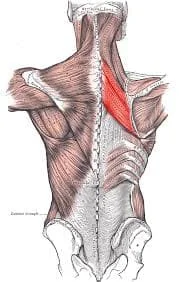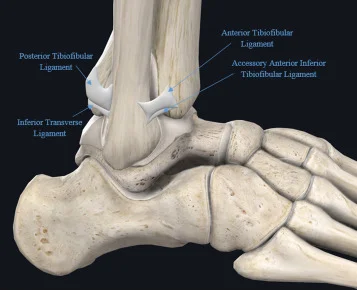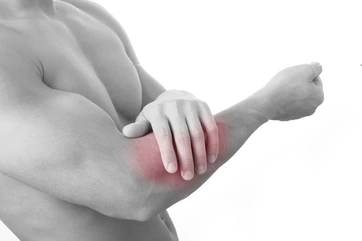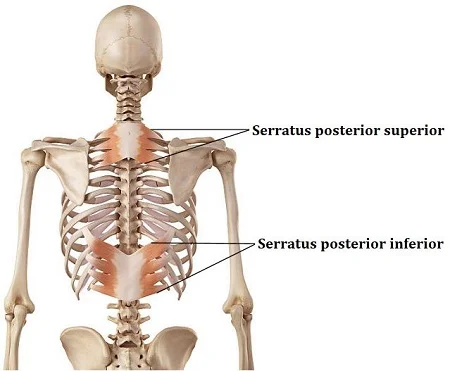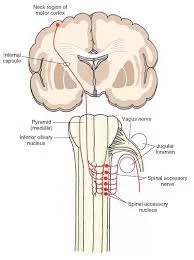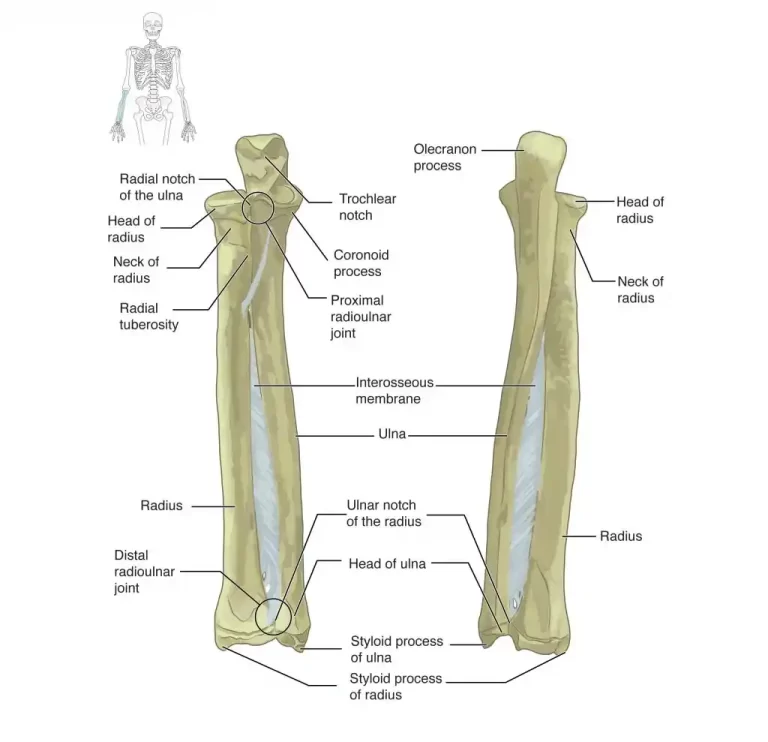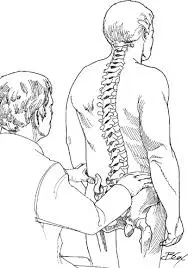Rhomboid Muscles
The rhomboid muscles are a pair of muscles located in the upper back region. They are primarily responsible for retracting the scapulae (shoulder blades), which means pulling them together towards the spine.
Major and minor rhomboids comprise the rhomboids, a collective group of muscles. The stability of the scapula the shoulder girdle and all upper limb movements depends on the rhomboids.
What Is The Rhomboid Muscles?
The rhombus-shaped muscles connected to the scapula are known as the rhomboid muscles or just the rhomboids. The rhomboid muscles are located on both sides of the upper back.
The dorsal scapular artery supplies blood to both rhomboids and is innervated by the dorsal scapular nerve. Variations in the rhomboid muscle have been observed rarely. Although rhomboids are associated with rhomboid palsy and use scapula, rhomboid, and rhomboid musculature surgeries are rare.
- Rhomboid major muscle
- Rhomboid minor muscle
They perform the following purposes:
Sketching the scapula superiorly
Assisting the scapula
Rotating the inferior glenoid cavity
Structure Of Rhomboid Muscles
The two separate muscles that make up the rhomboids are the major and minor muscles, one of which is situated straight deep in the trapezius. It inserts at the base of the scapula’s spine, close to the medial edge of the scapula.
The quadrangular rhomboid major muscle is situated beneath the rhomboid minor. The rhomboid muscles originate from the spinous processes of the T2-T5 vertebra. They insert on the scapula’s medial border, immediately below the rhomboid minor.
Function Of Rhomboid Muscles
The shoulder girdle comprises the latissimus dorsi, serratus anterior, sternocleidomastoid, trapezius, pectoralis, and rhomboid major and minor, a set of deep intrinsic shoulder muscles. These muscles play an important role in upper limb mobility also shoulder stabilization via trunk articulation.
The rhomboid muscles are responsible for the scapula’s rotation, elevation, and retraction.
To inhibit winging and stabilize the scapula, the rhomboids work more in connection with the serratus anterior, trapezius, and rhomboid major and minor. The muscle group that opposes the rhomboids is the serratus anterior.
The inferior scapular angle rotates and the medial border of the scapula wings due to rhomboid dysfunction, weakening, or loss of nerve function.
Finally, it has been demonstrated that the rhomboids are essential for throwing and overhead arm movement in addition to being required for pulling.
Origin
The major and minor muscles, located right below the trapezius, comprise the two distinct muscles that make up the rhomboids.
Rhomboid minor: The ligamentum nuchae and the C7 and T1 vertebrae are the origins of the cylindrical rhomboid minor muscle.
Rhomboid major: The quadrangular rhomboid major muscle is situated beneath the rhomboid minor. The spinous processes of the T2-T5 vertebra are the origin of the rhomboid muscles.
Insertion
Rhomboid minor: The muscle inserts into the base of the medial end of the scapular spine by extending obliquely in an inferolateral direction.
Rhomboid major: It inserts at the base of the scapula’s spine, close to the medial edge of the scapula.
Nerves
The motor function of the rhomboid muscles is directed by the dorsal scapular nerve (DSN). The ventral ramus of spinal nerve root C5 is the basis of the dorsal scapular nerve, which travels posterior inferiorly through the middle scalene muscles and between the levator scapulae, posterior scalene, and serratus posterior superior. It continues deep into the brachial plexus, innervating the anterior border of the rhomboid minor and major muscles.
Blood Supply
The main artery supplying the rhomboid muscles is the dorsal scapular artery (DSA), which usually originates from the second or third segment of the subclavian artery.
Lymphatics
Variations have also been observed in other investigations where the thyrocervical trunk is the cause of the DSA. No matter where it originates, the DSA travels through the brachial plexus before joining the dorsal scapular nerve and running parallel to it.
Action
- Retracts scapula
- Elevates scapula
Function of Rhomboid Muscles
The shoulder girdle is made up of the latissimus dorsi, serratus anterior, sternocleidomastoid, trapezius, pectoralis, and rhomboid major and minor, a set of deep intrinsic shoulder muscles. These muscles play a crucial role in upper limb mobility as well as shoulder stabilization via trunk articulation.
The primary function of the rhomboid muscles is scapular retraction around the scapulothoracic joint. The simultaneous sliding of the scapula medially and superiorly along the trunk is known as a scapular retraction. The scapula moves superomedial, descending the shoulder girdle and rotating the glenoid cavity inferiorly. When sitting, standing, and walking, the rhomboids support good posture by preventing excessive scapular protraction.
Furthermore, the scapula is stabilized and fixed into place by the contraction of the rhomboids. This offers a fulcrum around which the upper limb can move and an anchor point in space from which different muscles of the upper limb can work.
Embryology
The thoracic somitic cells give rise to the deep shoulder girdle muscles, which include the rhomboid major, rhomboid minor, and serratus anterior. On the other hand, additional shoulder and upper limb muscles originate from the limb bud and lateral plate mesoderm. The deep shoulder girdle muscles are innervated by branches of cervical spinal nerves, in contrast to the rest of the skeletal limb muscles, which are innervated by the brachial plexus.
Similar to other muscles in the upper limbs and shoulders, the rhomboids’ nerve supply is linked to their embryonic beginnings despite these differences.
Muscles
The shoulder girdle comprises the latissimus dorsi, serratus anterior, sternocleidomastoid, trapezius, pectoralis, and rhomboid major and minor, a set of deep intrinsic shoulder muscles. Also, to support the scapula and prevent winging, the rhomboids function in connection with the serratus anterior, trapezius, and rhomboid major and minor. Furthermore, the muscle group opposing the rhomboids is the serratus anterior. The levator scapulae and the rhomboids collaborate to raise and lower the scapula.
Physiologic Variants
Rarely found rhomboid muscle variations can provide fascinating examples. An extra rhomboid muscle has been found in humans on three documented occasions. The first, referred to as the “occipital-scapulars,” crosses the splenius capitis and attaches to the level of the occipital bone. It passed deep into the trapezius and entered the rhomboid major and minor muscle insertions at the level of the scapular spine.
A second variation began at the superior nuchal line, deep in the trapezius, and was called “rhomboideus-occipitalis or capitis.” It then enters into the serratus posterior, between the superior levator scapulae and inferior rhomboid minor. The third variation, also known as “rhomboideus capitis,” traveled inferiorly on the splenius capitis after emerging from the superior nuchal line.
Surgical Considerations
It is uncommon to perform surgery on the rhomboid muscles. Still, in certain situations, it might be necessary. Mandibular deformities, esophageal reconstruction, head and neck malignancies, and Sprengel disease, which is the congenital elevation of the scapula, can all be treated with rhomboid muscle flaps. Fascia lata grafts can also be used to treat significant winging of the scapula caused by weaker rhomboid muscles. These grafts attach the scapula’s inferior angle and infra-medial border to the latissimus dorsi and spinal muscles and support the weaker rhomboids. Nevertheless, since the grafts have a history of failing and weakening over time, problems could develop.
For myofascial pain syndrome patients, superficial trapezius injections have not been demonstrated to be as helpful as ultrasound-guided injections into the rhomboids in terms of pain, disability, and quality of life.
Clinical Significance
One of the more prevalent conditions unique to this muscle group is a use scapula resulting from rhomboid palsy. Damage to the dorsal scapular nerve is the most frequent cause of rhomboid palsy. The most common cause is entrapment of the dorsal scapular nerve, however, the precise site of entrapment is unknown. Other known causes of rhomboid palsy include anterior shoulder dislocation, trauma, and overuse of overhead sports like baseball and volleyball that directly damage the dorsal scapular nerve.
Patients frequently complain of discomfort in the neck, back, and shoulders in addition to aberrant shoulder mobility and medial scapular pain. Upon physical examination, the scapula frequently exhibits mild lateral winging. Rhomboids are positioned deep in the body, making it difficult to detect rhomboid palsy because of this faint test finding. The diagnosis of rhomboid palsy can be made most precisely with EMG, which also demonstrates a prolonged muscle action potential latency. The majority of the time, conservative treatment focuses on cervical spine stabilization, muscle relaxants, NSAIDs, physical therapy, and in severe situations, surgery.
Assessment Of Rhomboid Muscles
Typically, posture-related factors such as improper shoulder positioning during sports, lifting heavy objects, thoracic hyperkyphosis, forward head posture, and upper crossing syndrome are the cause of rhomboid injuries. Regular exercisers notice that weaker muscles, such as the rhomboid muscle, are more prone to strains and rips.
Palpation
- Together, they palpated.
- Because the trapezius covers the rhomboids, you must relax it by putting your hand on the small of your back.
- Put your fingers under the vertebral border to palpate it.
- The rhomboids push the fingers out as the patient lifts their hand off their back, perhaps with some resistance.
Exercise
Stretching Exercise
Doorway Stretching
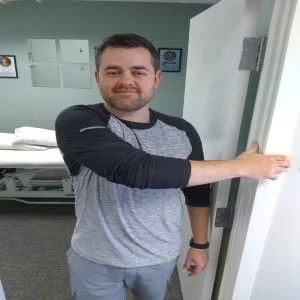
- To extend a door, stand straight with your right side facing it.
- Grab the door frame at chest height with the right arm that is closest to the door.
- Your right thumb should be pointing downward while your right arm rotates inward.
- Shift your torso to face the door while maintaining a straight right arm.
- Steer clear of hunching your shoulders or bending your torso.
- There ought to be a stretch between the two scapulae and your spine.
- Hold this position for no more than 10–20 seconds, then repeat 2-4 times.
Rhomboids stretch
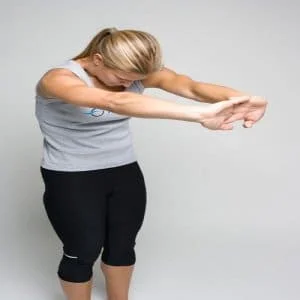
- Place your feet about hip-width apart and stand up.
- Now put your arms out in front of you and hold hands.
- At this point, extend your shoulders forward until you feel your scapulae separate from one another.
- Next, lean your head slightly forward to get a profound stretch.
- Hold for 20 to 30 seconds, then repeat the stretch three or four times.
- Now, rotate your hands so that the lower hand is up and the upper hand is down, and clasp to experience a stretch.
Sitting Rhomboid Stretch
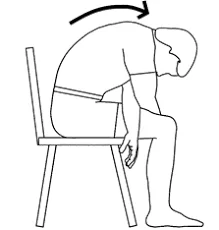
- Lie back in a chair with comfort.
- Fold both arms across the midsection.
- Next, sag the neck gradually in the direction of the legs. With your elbows straight you slowly bend forward in an attempt to touch the floor.
- Stretch again two or three times, holding for at least thirty seconds each time.
Rhomboids stretch 1
Steps to perform this stretching exercise: Stand with your feet hip-width apart.
Now put your arms out in front of you and hold hands.
At this point, extend your shoulders forward until you feel your scapulae separate from one another.
Then, to feel the deep stretch, softly lean forward and bend your head.
For three to four stretches, repeat holding the stretch for 20 to 30 seconds.
Now, reverse the hands so that the lower hand is up and the upper hand is down, and clasp to experience a stretch.
Rhomboids stretch 2
For this bending exercise, sit down in a level, flat chair.
Step at the chair’s edge now, keeping your knees perpendicular and your feet in contact with the floor.
Now spread your legs out just a little wider than the breadth of your hips.
With your left hand, extend your reach and seize your right ankle.
Press into the left elbow crease with your right hand until you feel a slight stretch on the left side between the scapulae and the spine.
Deep breathing, hold this for ten to fifteen seconds. After two or three repetitions, return to the starting position.
Now move the hand to the left and repeat the action there.
Rhomboids stretch 3
To perform this stretching exercise, stand up with your feet hip-width apart.
Now, raise your hands to shoulder height, join your fingers with someone else’s, and turn your arms inside out so that your palms are facing away from your body.
Till you feel a stretch between the scapulae, extend your arm forward.
Hold it and do two or three repetitions of it.
Rhomboids stretch 4
Use the sit-on-the-chair exercise to perform this stretching exercise. The feet are flat on the ground, and the back is straight.
At this point, cross your arms at the forearm.
Proceed to bend at the waist after that.
Additionally, the hands are moving apart and the arms are crossed.
Stop the exercise there when the patient experiences a slight strain between the scapulae.
Repeat after holding the pose for ten to fifteen seconds.
L-arm stretch
Stretch your left arm, palm facing up, across your chest while lying on your stomach.
As much as possible, without causing pain, drag your chest towards the floor using your shoulder muscles.
After 20 to 30 seconds of holding the stretch, release it.
For 8–10 repetitions, go in and out of the stretched position while holding for 20–30 seconds each time.
After that, transfer to your right arm and perform the same stretch.
Even though the stretch might not feel comfortable at first, persevere and find a comfortable position. To open up the hips, for instance, the patient might find it easier if you bend the right leg over the chest in opposition to the left arm. and on the other side in opposition.
Strengthening exercise
Seated Cable Rows
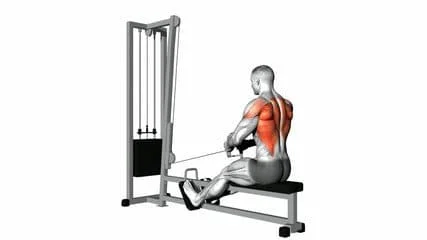
- With your feet on the platform and your knees slightly bent, take a seat in front of a cable machine.
- Grasp the cable handles while extending your arms forward.
- Firmly press the handles back on your chest, drawing your shoulder blades closer together.
- Reverse slowly, release, and repeat three sets of ten to twelve repetitions.
Face Pulls
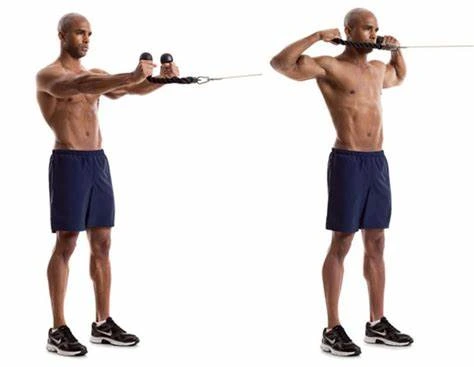
- At face height, fasten a rope handle to a cable machine.
- With your palms facing down, grasp the rope and step back.
- As you draw the rope toward your face, squeeze your shoulder blades together.
- Gently let go and continue three sets of ten to twelve repetitions. At face height, fasten a rope handle to a cable machine.
- With your palms facing down, grasp the rope and step back.
- As you draw the rope toward your face, squeeze your shoulder blades together.
- Gently let go and continue three sets of ten to twelve repetitions.
Scapular retraction
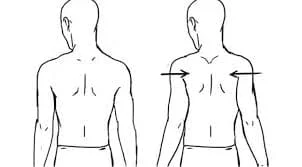
- Place your chest exactly beneath the bar while seated on the floor.
- Contract your core and grab the bar while keeping your hands palms away from you. Pull yourself up by keeping your shoulders, chest, hips, and knees straight.
- To elevate yourself two to three inches over the bar, squeeze your shoulder blades together and pull them down and back while maintaining an open chest. Don’t dispute or make amends. Permit me to take this back one more time.
- Breathe normally, release the contraction, and step back to the starting position.
- Do this fifteen times.
Bent-Over Barbell Row
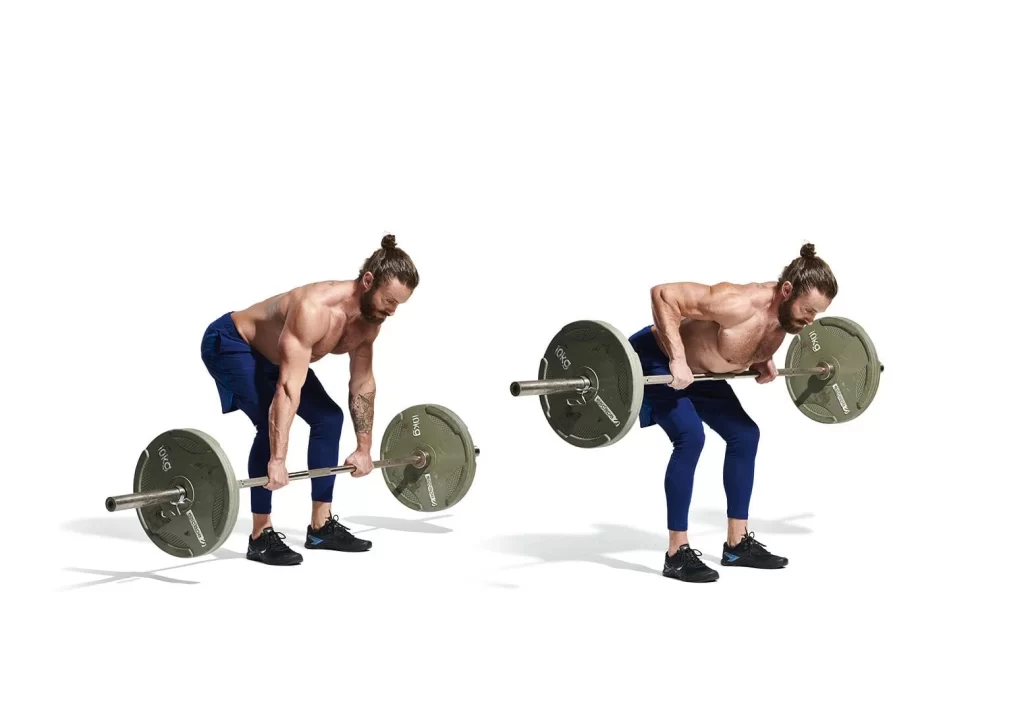
- After setting your barbell down on the ground, add the necessary weights.
- As with a deadlift, step below the bar and hinge at the hips to grab it with a double overhand grip.
- Deadlift the bar to your pelvic region while maintaining a straight back and using your core muscles.
- To get into the starting position, drive your hips back as far as they will go and let the bar drop until it is almost at your knees.
- Lift the barbell till it reaches your midsection. Tuck your elbows in sufficiently during the row to make it comfortable. The angle could vary depending on how wide you hold the object.
- After pausing, carefully lower the bar once more.
- Continue rowing for the specified quantity of times.
One-Arm Cable Row
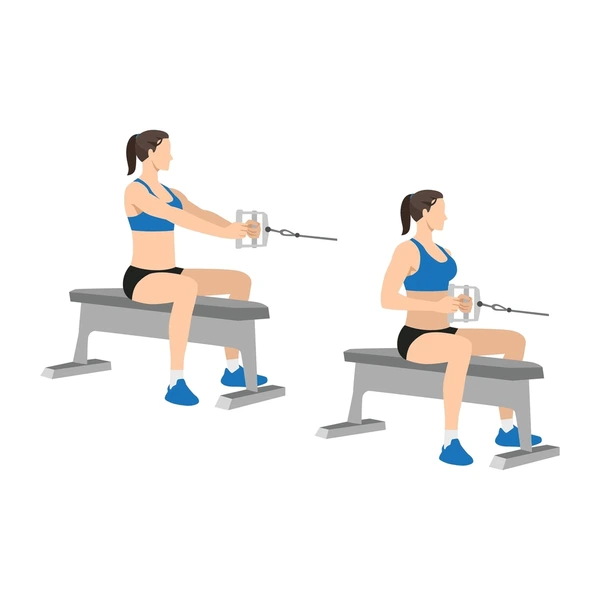
- After fastening a handle to the pulley, raise the cable machine until it is chest-high. Place a level bench next to it.
- Step back from the cable machine so that your arm is stretched, then grab the handle with your left hand.
- With your back straight and your head neutral, take a seat on the bench.
- Row the attachment to the left side of your body, maintaining your left elbow as near to your body as possible.
- After pausing, move the handle back to its initial position.
- Repeat on the right side after completing a rowing rep.
Pull-Ups
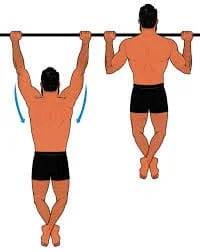
- Go beneath the pull-up bar. Using a double overhand grip (palms facing away from you), grasp the handles wider than shoulder width.
- Remove your feet from the sides and assume the dead hang position.
- Put your chest up, tighten your core, and raise yourself toward the ceiling.
- Pause, then lower yourself back down, keeping your lats in mind the entire time.
- Repeat until you return to the sides and remove the pull-up bar.
Single-Arm Dumbbell Row
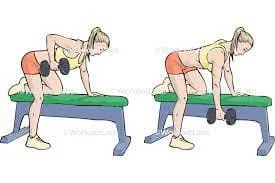
- Put your right hand and right knee on a level surface, such as a weight bench. You may stabilize yourself and keep your torso angle between 60 and 90 degrees by adding some body weight.
- With your left foot planted firmly on the ground and your left knee slightly bent, face forward.
- Grasping a dumbbell with your left hand, elevate it marginally over the floor. Hold it there.
- When the dumbbell can no longer be moved, stop rowing it in the direction of your left hip. Carefully lower it back down.
- After completing the required number of repetitions, switch to the opposite side.
Meadows Row
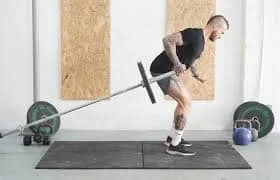
- Take a position perpendicular to the attachment or landmine press machine.
- With your right hand, take hold of the bar’s end with an overhand grip as you bend forward.
- To improve stability, rest your left forearm above your left quadriceps.
- Up-rowed barbell with the spine in a neutral position.
- Ensure your entire body remains motionless while you raise your arm toward the ceiling.
- Once your arm reaches its peak, hold the position for a brief moment before lowering the bar back down to a near-floor position.
- After completing a set of repetitions, move to the opposite side.
Conclusion
The stability of the shoulder and proper posture depend on the rhomboid muscles. Exercises that strengthen these muscles can help prevent injuries, correct posture, and increase the stability and strength of the upper body as a whole. However, to avoid muscular imbalances and potential injuries, it’s crucial to stick to a balanced exercise regimen that works across the muscle tissues.
FAQ
What causes rhomboid muscle pain?
Overstretching, repetitive actions, and prolonged sitting can all harm the rhomboids. Pain in the rhomboid muscles may be reduced with mild activity. Additional therapies consist of analgesics, anti-inflammatory medicines, and heat and cold therapy.
What exercises work the rhomboids?
Chest Supported Dumbbell Row.
Single Arm Dumbbell Row.
Cable Face Pulls.
Barbell Shrugs.
Trap Bar Shrugs.
Dumbbell Reverse Flyes.
Pendlay Row.
Kettlebell Gorilla Rows
Is rhomboid pain serious?
These symptoms may be indications of a more serious condition, such as a significant muscle rupture or shattered bone. Long-term health problems might result from rhomboid injuries. You can stop doing whatever is causing your rhomboid muscle soreness. Things will likely get worse if you keep exercising or participate in sports.
What is the function of the rhomboids?
The rhomboid muscles are responsible for the scapula’s rotation, elevation, and retraction. Along with maintaining the scapula in place at the posterior thoracic wall, they also extend its medial boundary.
What happens when the rhomboid is injured?
Restricted range of motion: The shoulder and arm may have a limited range of motion due to a strained or damaged rhomboid major muscle. Reaching for objects above the head or moving the arm backward or upwards may become challenging as a result.
How do you heal rhomboid muscles?
Apply ice to your shoulder.
If there’s no swelling, switch between heat packs and ice packs.
Utilize analgesics such as acetaminophen.
Make use of nonsteroidal anti-inflammatory medications.
Keep your arm and shoulder down.
Stretch gently.
Maintain a straight posture.
Apply a topical pain reliever.
Why stretch rhomboids?
You can slouch over or have pain in the area between your shoulder blades in your midback if your rhomboids are weak or tight. You may enhance your posture shoulder flexibility and mobility by strengthening and stretching your rhomboids.
How do you release rhomboid tension?
Start by assuming good posture when standing or sitting. Fingers should be interlaced in front of the chest. Start by rounding your upper back, bringing your chin toward your chest, and slowly extending your arms away from your chest. After holding this stretch for 15 to 30 seconds, progressively return to your starting posture.
What is the major action of the rhomboid muscles?
The two muscles that make up the rhomboids are the rhomboid major and minor. The two rhomboids form parallel bands that extend inferolaterally from the vertebrae to the medial margin of the scapula, lying deep to the trapezius. Compared to the bulkier Rhomboid Minor, which is positioned above it, the Rhomboid Major is twice as wide, thin, and flat.
Is the rhomboid a bone or muscle?
The two muscles that make up the rhomboids are the rhomboid major and minor. Compared to the bulkier Rhomboid Minor, which is positioned above it, the Rhomboid Major is twice as wide, thin, and flat.
References
- Rhomboid major muscle. (2024, May 4). In Wikipedia. https://en.wikipedia.org/wiki/Rhomboid_major_muscle
- Rhomboids. (n.d.). Physiopedia. https://www.physio-pedia.com/Rhomboids
- Farrell, C., & Kiel, J. (2023, May 16). Anatomy, Back, Rhomboid Muscles. StatPearls – NCBI Bookshelf. https://www.ncbi.nlm.nih.gov/books/NBK534856/

